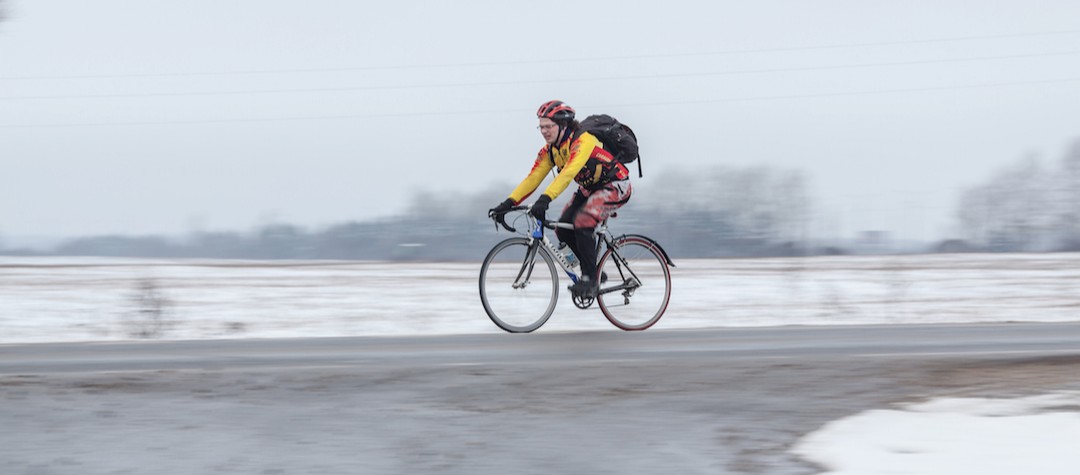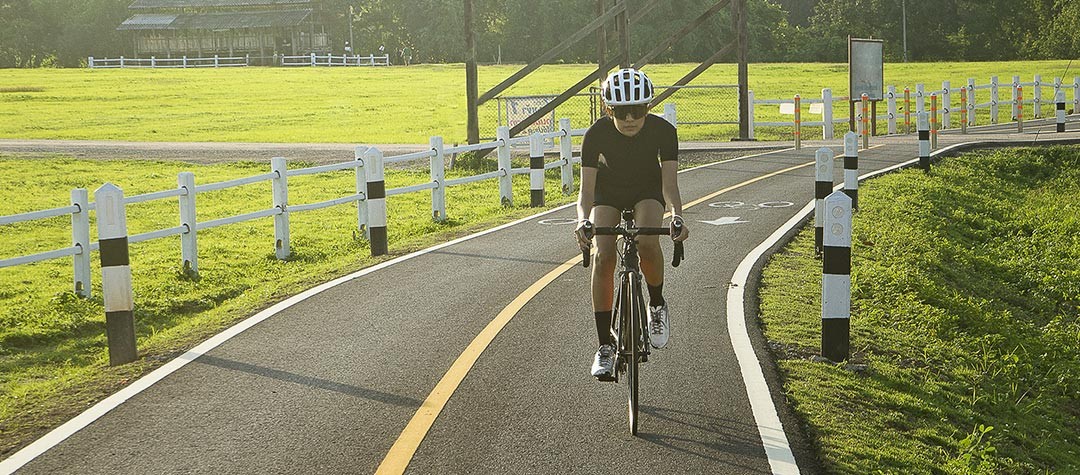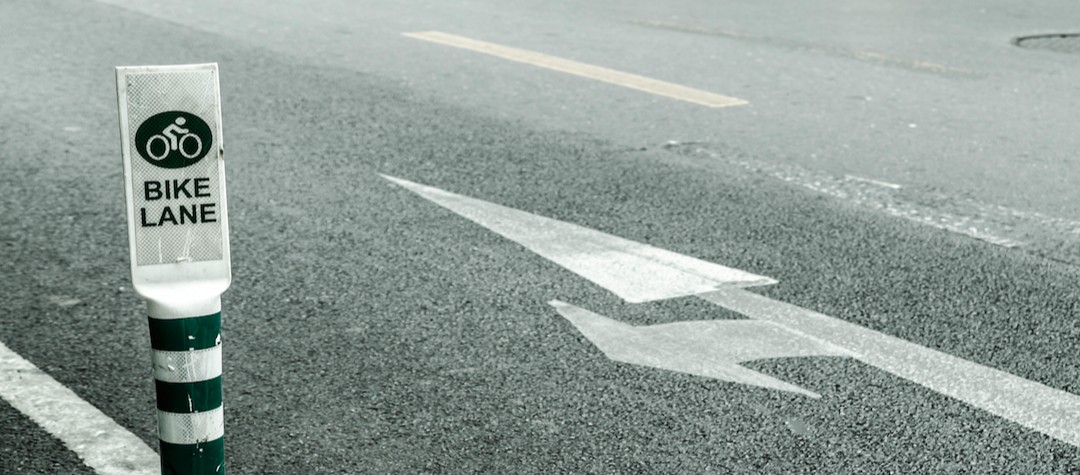It’s not uncommon for road cyclists to have more than one bike, specifically a bike that they use for harsher conditions, but is a winter specific bike an unnecessary luxury?
'Winter bike', 'commuter bike', 'wet weather bike' are all names given to that trusty steed that is used by many riders to keep them riding through more testing conditions. Wet and wintry conditions can be harsh on both rider and bike, but having a bike that is set up and ready to ride whatever the elements throw at you is a great position to be in.
Having a winter specific bike is of course an additional expense, but surely having to replace those components on your main and likely more expensive bike after months of riding through wet, grimy, and often gritted conditions will work out even harder on your pocket. So is buying a bike for riding in bad conditions a luxury or necessity? We look at the pros and cons.
Pros of having a winter bike
1. Save wear on your best bike
After piling up the distance over the better months on your best (and probably most expensive) bike , you can put it away as the harsh weather approaches, safe in the knowledge that it isn’t going to have to suffer the worst the roads throw at it and will be in tip top condition when you decide it is safe for it to come back out to play.
2. Mudguards/fenders means a happy rider and bike
The fitting of mudguards is an absolute must. Not only do they stop you getting wet, particularly your behind and feet, but they will also stop anyone riding behind you being covered from your spray. As an additional bonus, they also reduce the amount of grit and water splashing all over the bike’s components.
3. Component costs
By opting for a winter bike with generally cheaper components, then the cost of service, repair and replacement after a winter of abuse need not come anywhere near what it would have cost had you just continued to ride your best and most expensive bike.
4. Make use of an older bike
You need not buy a winter bike but can instead utilise one of your older bikes and turn it into a winter bike. That way you get to buy a new ‘best’ bike and relegate your older one into the status of ‘winter bike’. Alternatively, just asking around can often net you a unwanted bike that has been gathering nothing but cobwebs, but is fit for your purpose.
5. Improved ride comfort
Riding in more difficult conditions means that you are probably not going to be aiming for those Strava PBs, so you can afford to put comfort over performance. Perhaps go for a bike with a more relaxed frame geometry and bigger tyres to give you a more comfortable ride so you continue to clock up those winter kilometres in relative safety.
6. Training benefits
Riding a heavier bike, stacked with mudguards, heavier tyres and wheels (and probably in the face of some horrendous winds) is going to mean you bike requires more effort to ride it and thus will give you training benefits. By the time the weather changes for the better your best bike will feel as light as a feather!
7. Time saving before and after a ride
By having a winter bike you don’t have to second guess what the weather is going to be and then be forced switch your mudguards on and off you bike. Just keep them on year-round and they’ll help your components stay cleaner meaning that you don’t necessarily have to see to them at the end of absoltely every ride.
8. Less flats and more grip
Ideally, on a winter bike you should run thicker tyres with more grip. The additional grip adds to your safety, in sometimes treacherous conditions, and sturdier tyres should mean you spend less time at the roadside getting soaked while changing a flat. Wider tyres also provide a more comfortable ride and are less prone to pinch punctures.
9. You keep riding
Having a dedicated bike to do the dirty work for you (and keep your prized best bike safe) means that you will keep riding and that has to be a good thing. Whether it’s for commuting, clubs rides, or just solo outing, it really has to be better than trying to maintain your fitness on a turbo trainer in the shed or not bothering at all.
10. You can buy a ready-made winter bike
If you don’t fancy converting your old bike into a wet weather warrior, then you can buy one.
Several manufacturers offer ready-made winter bikes, complete with mudguards and more hardy components, with an increasing number coming with disc brakes which are more effective in the wet than regular caliper brakes. A second-hand winter bike can often be a good option.
Disadvantages of having a winter bike
1. Initial cost
Okay, so there's some cost involved of buying a winter bike, and while you don't want to buy too low specification a bike because it will affect your enjoyment of the ride, there’s still no need to go overboard and buy something on par with your good and likely very expensive bike. The second hand market could be a way to minimise your costs.
2. Time and inconvenience
Even if you are planning on using your existing bike there are still other costs involved. Mudguards, sturdy wheels and wider tyres all come at a cost, notably the time it would take you to swap parts on and off dependent on the weather. Remember not all bikes are able to accommodate mudguards, as there’s not enough clearance for them.
3. Storage issues
Having more than one bike isn’t always the easiest if you are limited for space. You could consider one of the ingenious space saving storage solutions, including ones that allow you to mount your bike on a wall or even hoist it up towards the ceiling. Remember, your good bike could be out of use for a number of months and could be broken down with the wheels removed so it can more easily be stored away.
4. Slower speeds
A heavier bike is going to be a slower bike, but in wintry conditions you are going to be slower anyway. It is better to accept that you’re not aiming to be King of the Mountains on your wet weather bike and just enjoy the fact that you are still out their riding while many others are inactive or sweating it out on the turbo.
5. Winter tyres may not fit
If aiming to change the tyres on your bike for winter it is possible that they may not fit an existing bike you own. Tyres that are 25mm larger are not suitable for some bikes as there is sometimes not enough clearance to fit them. That said, you can still use a 23mm tyre with greater grip than your regular racing tyres.
6. Care and maintenance
Looking after your winter warrior takes time. You’ll need to check over your components after each ride and ensure that your chain is cleaned and lubricated regularly, especially after riding in wet and gritty conditions. You‘ll need to use a ‘wet lube’ which is thicker than regular lubes so it does not wash off so easy in the rain, but also attracts dirt and grime, meaning your chain needs to be degreased frequently.
With all that in mind, its is clear there are some advantages and drawbacks of having a winter bike, but try to think of it in the long term. Over a few winters, the savings you make on lower wear on your best bike will soon add up and make that investment in a winter bike well worth it. With a winter bike you’ll keep riding whatever the weather and that has to be a good thing. You now just have to find somewhere to keep it!
Picture credit: simak/Shutterstock.com














